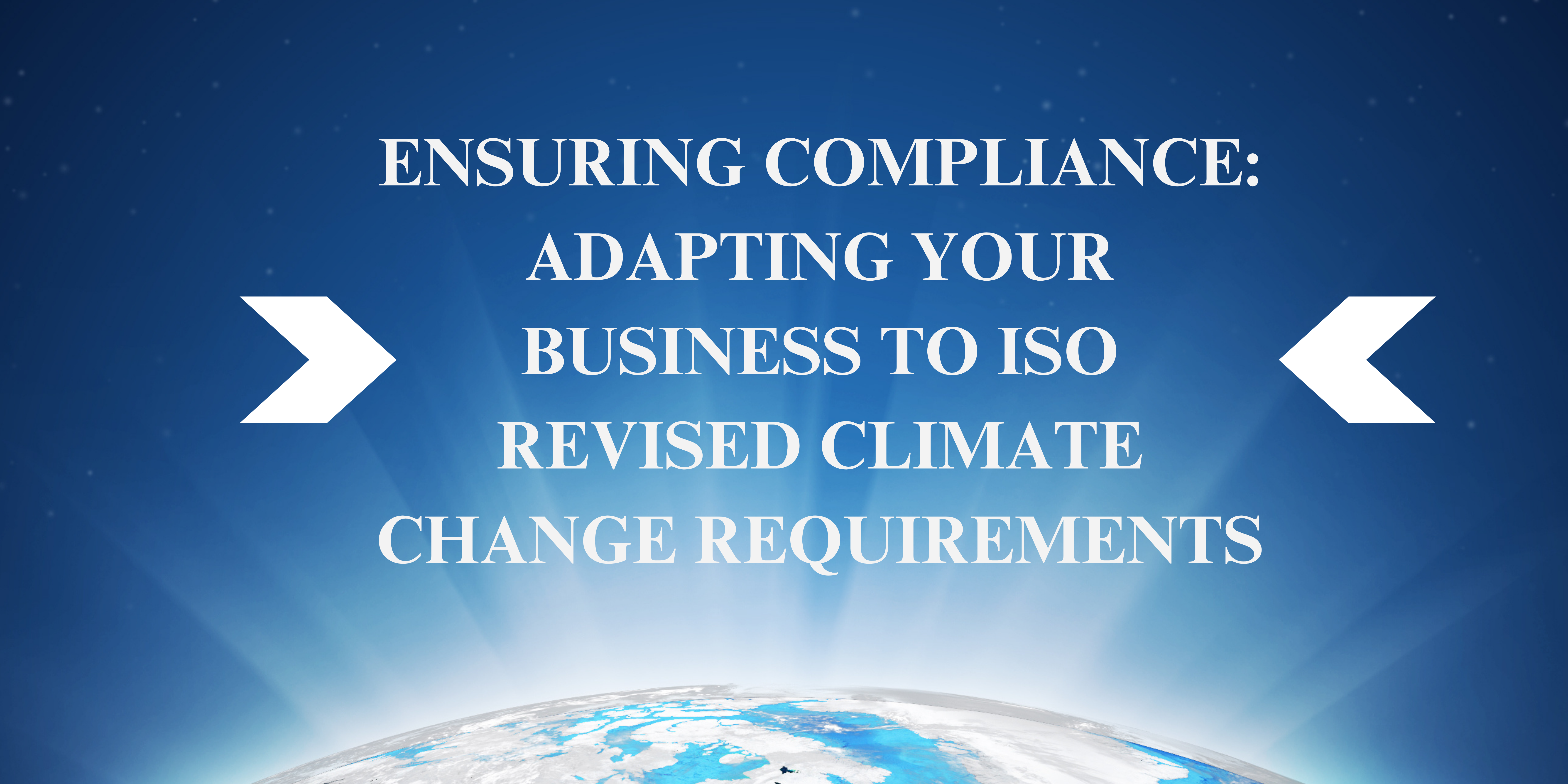
Ensuring Compliance Adapting Your Business to ISOs Revised Climate Change Requirements
Climate change is no longer a concern reserved for environmentalists; it has become a critical issue for businesses across all sectors. The discourse surrounding greenhouse gases, corporate carbon footprints, global warming, and their impact on the planet has been ongoing for decades, involving diverse stakeholders ranging from governments to small enterprises. The detrimental effects of climate change are becoming increasingly evident, making it imperative for businesses to address these challenges proactively.
Recognizing the urgency of the climate crisis, the International Organization for Standardization (ISO) has introduced amendments to existing and new management system standards, enabling companies to achieve certification. These amendments require organizations to consider the relevance of climate change risks in their analysis of the organization's context and the needs of interested parties.
For some standards, climate change risks may not be immediately apparent. ISO intends not to force a connection where it does not naturally exist. Instead, the new requirements added to Chapter 4 of the ISO standards ensure that every organization includes climate change in its contextual analysis. If deemed relevant, climate change considerations must be integrated into the design and implementation of the management system itself.
New Climate Change Amendments
The climate change amendment affects various ISO Management System Standards, including ISO 9001:2015, ISO 14001:2015, ISO 45001:2018, and ISO/IEC 27001:2022. The significance of climate change varies by sector, location, and operations. ISO aims to ensure organizations consider climate change in their decision-making processes.
- Understanding the Organization and Its Context (4.1): Organizations must now determine whether climate change is relevant to their contextual analysis.
- Needs and Expectations of Interested Parties (4.2): It is acknowledged that relevant interested parties may have requirements related to climate change. Organizations need to consider these requirements during their stakeholder analysis.
These amendments enhance the existing requirements in Chapter 4, ensuring that climate change is consistently factored into the management system as a critical external consideration. The primary purpose of clauses 4.1 and 4.2 remains the same, but the new additions emphasize the importance of climate change in organizational analysis and decision-making.
For example, in the ISO 9001:2015 Quality Management Systems Standard, the following changes are made:
Clause 4.1:The organization must identify external and internal issues that are relevant to its purpose and impact its ability to achieve intended results. The amendment also requires organizations to assess the relevance of climate change in this context.
Clause 4.2: The organization shall identify relevant interested parties and their requirements. The amendment includes the following factors:
- Embedding Climate Change into Organizational Considerations
The new requirements and notes are integrated into existing clauses related to understanding the business, its context, and the needs of interested parties. This integration ensures that climate change is firmly embedded in organizational considerations, including environmental objectives and targets, and in the design and implementation of management systems.
- Promoting Awareness and Action
The primary goal of this update is to promote awareness about climate change and encourage organizations to take proactive measures. For instance, ISO 14001, which focuses on environmental management systems, now not only emphasizes the impact of business activities on the environment but also considers how climate change can impact the business.
By integrating climate change considerations into the context of management systems, organizations can better prepare for and mitigate climate-related risks. This comprehensive approach aligns with global efforts to address climate change and supports businesses in contributing to a sustainable future.
How Businesses Navigate the New ISO Requirements
Adapting to the revised ISO standards requires a comprehensive strategy that integrates environmental management into the core of business operations. Here are key steps businesses should take:
- Conduct a Gap Analysis: Evaluate your current compliance status against the revised ISO standards to identify areas for improvement. This analysis will guide necessary changes and investments.
- Engage Stakeholders: Involve employees, suppliers, and customers in your environmental initiatives. Educate and train them on the new requirements and their roles in achieving compliance. Collaboration and transparent communication are essential for fostering a culture of sustainability.
- Integrate Environmental Management Systems: Update your EMS to align with the revised ISO standards. This includes updating policies, procedures, and objectives to reflect the new requirements and embedding environmental management into strategic decision-making processes.
- Continuous Improvement and Auditing: Establish a framework for continuous improvement, regularly reviewing and updating your environmental practices. Conduct internal and external audits to ensure ongoing compliance with ISO standards and identify areas for further enhancement.
The amendment requires no immediate action for businesses already certified to the affected ISO standards. However, it should be integrated when managing and updating your systems and assessed during internal audits and Management Reviews. Conducting a risk assessment, determining actions to address climate change risks, and monitoring progress are essential.
While existing ISO clauses included considerations for climate change impacts, the new amendment underscores its growing relevance. This shift reflects ISO’s recognition of climate change as a critical issue demanding organizational attention.





Climate change has become a significant issue. Implementing these compliance measures will certainly lead to positive outcomes.